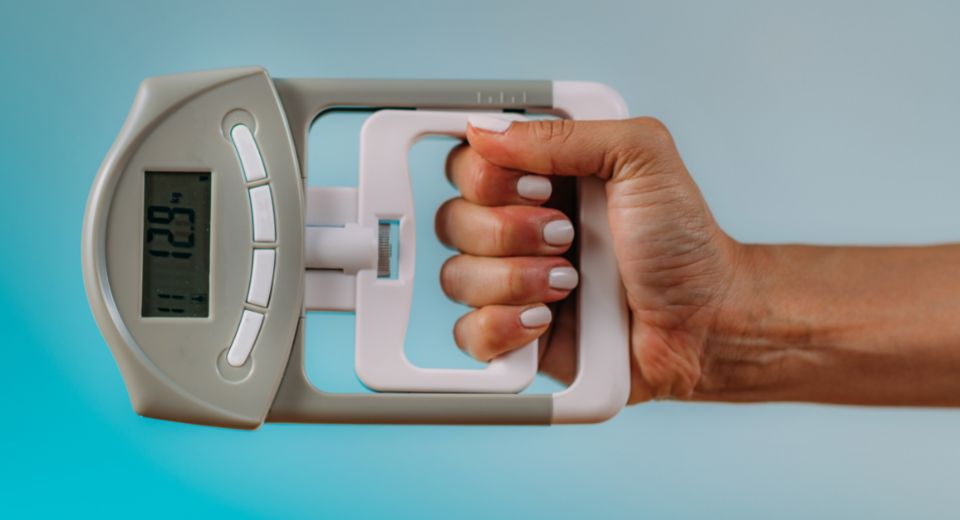
Author: Alyssa Sota, Office Manager
Grip Strength? ‘What does that have to do with anything?’ you might ask. When I first learned about it, it seemed like a complete waste of time. But the truth of the matter is, grip strength is a reliable indicator of health conditions including heart attack or stroke. Grip strength shows muscle health in the hands and forearms. As we age our grip tends to weaken, which eventually begins to affect our day-to-day lives. Grip strength is incredibly useful in everyday life. A strong grip does much more than provide you with a firm handshake or help open that jar of relish, it may also help you measure your risk for having a heart attack or stroke. Why? Because a stronger grip is generally an indication of more muscle mass, which comes from increased physical activity and better overall health.
Did you know that it takes 34 muscles to move your fingers and thumb? And guess what, all those muscles are in the palm of your hand and forearm. Strong muscles play an important role in helping you to maintain good balance and strength to perform your daily tasks efficiently. The stronger your muscles and connective tissues are in your hand, wrist and forearm, the more injury-resistant you will be. And if an injury does take place, stronger tissue will usually recover faster so that you’re back to your normal self, faster.
So, what can help improve my grip strength? There are things you can do to keep your grip strength in a health range.
- Strength train often – Strength training 2 to 3 times per week for each muscle group. For a specific muscle group to recover, training sessions for that muscle group should be 48 hours apart.
- Lift heavier – Perform a farmer-carry exercise by holding a kettle bell or something heavy and walk the length of your living room. Vary the shape of the objects and slowly increase the weight.
- Simple exercises – Developing grip strength doesn’t take special equipment. Carrying grocery bags or squeezing out water from a washcloth will help increase grip strength.
Using a stress ball can reduce stress and strengthen hand and wrist muscles. Do these simple exercises at your desk or during short breaks.
- Grip Strength: Squeeze the ball for three seconds, then relax your grip. Repeat for one minute, then rest a minute. Repeat three times then switch hands. As your endurance increase, squeeze the ball for 90 seconds and rest for 30 seconds.
- Wrist Strength: Squeeze the ball for three seconds, then relax your grip. Repeat up to twenty times to a point of fatigue. This increases grip strength through the wrist and releases tension.
- Finger and Thumb Strength: Pinch the ball with the thumb and each finger, one at a time. Then pinch the ball between just the fingers, giving the thumb a rest. Hold each pinch for a count of three and repeat up to twenty times or to the point of fatigue.
Remember to start out light on your grip strength training and move up slowly.
The information provided is for general interest only and should not be misconstrued as a diagnosis, prognosis or treatment recommendation. This information does not in any way constitute the practice of medicine, or any other health care profession. Readers are directed to consult their health care provider regarding their specific health situation. Marque Medical is not liable for any action taken by a reader based upon this information.


